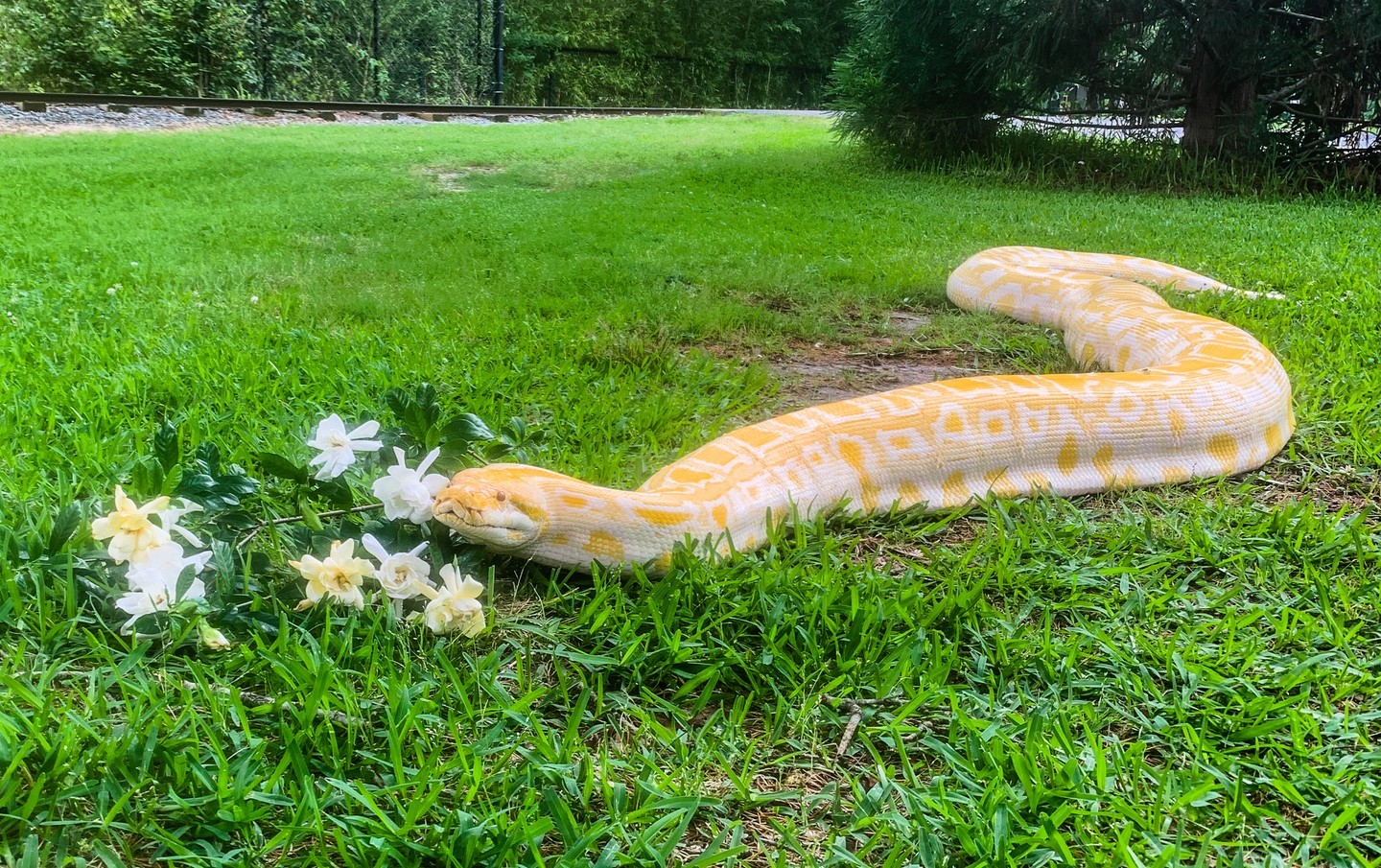– The ecological and economic impacts of invasive species
– Notable invasive species in U.S. ecosystems: The Burmese python and Argentine black & white tegu as case studies
– Strategies for managing invasive species: Prevention, control, and public education
– The role of zoos in invasive species awareness and conservation efforts
– Collaboration and policymaking in invasive species management
The urgent topic of invasive species, their attributes, and their widespread effects on environments, economies, and societies cannot be overstated. Invasive species are non-native organisms that cause damage to the areas they colonize. From the introduction of the species to their subsequent spread, the factors contributing to their invasive status are complex and multifaceted. This article will focus on Invasive Species Awareness Week, a time to highlight the issue and the species that exemplify the problem, such as the Burmese python and the Argentine black & white tegu, as well as discuss the role of zoos in raising awareness and the collective efforts needed to manage these invasive populations.
Invasive species like the Burmese python have become significant concerns within ecosystems such as the Florida Everglades. Originally from Southeast Asia, these pythons have become established in the Everglades due to accidental or intentional release by pet owners. Their predatory nature and ability to thrive in the Florida climate have resulted in a significant decrease in small mammal populations, showcasing the grave impact an invasive species can have on the biodiversity of an ecosystem. Furthermore, these events lead to knock-on effects that can alter the entire structure of an ecosystem, threatening its integrity and the survival of other native species.
Equally disruptive is the Argentine black & white tegu, which competes with native species in the same region. The introduction of tegus, facilitated by the exotic pet trade, has stressed native fauna, particularly those that rely on ground-nesting. With their habitual consumption of eggs, Tegus can decimate populations of birds, reptiles, and even amphibians, altering the reproductive success of these native species and, thus, the future of the ecological communities they belong to.
In addressing these invasive species, simply documenting their effects isn’t sufficient. Proactive and comprehensive management strategies are necessary to mitigate their impacts. Prevention remains the cornerstone of managing the spread of invasive species. It involves stringent regulations on the import and trade of exotic animals and plants and international cooperation to monitor and control the movement of potentially invasive species. Once an invasive species is established, control measures, including eradication, containment, and control programs, must be implemented, each requiring careful planning and interdisciplinary approaches to be effective.
Zoos nationwide are pivotal in driving the message of invasive species awareness. They provide educational opportunities for visitors to learn about the problems invasive species pose, participate in research, and support conservation efforts to protect native wildlife. Engaging exhibits, interactive programs, and direct involvement in wildlife conservation projects allow zoos to attract attention to this pressing issue and encourage the public to take action.
As modern zoological institutions, zoos have evolved into education and conservation knowledge hubs. Their work extends beyond their gates, significantly contributing to tackling invasive species problems. Zoos collaborate with researchers, policymakers, and conservationists to devise and test strategies to control invasive species populations. They contribute invaluable data on reproductive habits, dietary requirements, and behavior that can inform management strategies in the field.
Effective policymaking is integral to tackling the challenge of invasive species. Clear legislation, adequate funding for management programs, and engagement with stakeholders at all levels are the pillars of sound policy. Policymakers need to be equipped with the best scientific advice and the opinions of conservation professionals to craft policies that effectively address invasive species.
Ultimately, education is a powerful tool in the battle against invasive species. Increasing public understanding of the risks posed by non-native species and how individuals can prevent their spread is a fundamental component of any awareness initiative. During Invasive Species Awareness Week, the concerted effort to educate and engage the public reaches its peak. Zoos play a critical role during this time, showcasing invasive species within their care to illustrate the issues while sharing knowledge on the importance of maintaining the balance of ecosystems.
Through the discussion of invasive species like the Burmese python and Argentine black & white tegu, key strategies for their management, and the role zoos and policymakers play, this article has elucidated crucial aspects of the invasive species problem. Awareness efforts like Invasive Species Awareness Week shed light on the topic, galvanizing the public and professionals to contribute to protecting native ecosystems. Through strategic efforts and widespread public engagement, it is possible to combat the issue of invasive species and safeguard environmental integrity.
*****
Source Description
It’s Invasive Species Awareness Week! An invasive species is defined as one that is non-native and causes harm to the environment it has invaded by negatively impacting the economy, humans or native wildlife. Look at a few of our Zoo residents who are considered invasive species in the U.S.!
The Burmese python is native to Southeast Asia but is now a prevalent invasive species in the Florida Everglades after being released by pet owners or escaping. The python’s presence in FL has led to the decline of native mammal populations due to the competition for food that has been created. They are one of the largest constrictor snakes in the world, reaching lengths of up to 23 feet.
The Argentine black & white tegu, which is native to South America and arrived in Florida, is now an invasive species through the exotic pet trade. Tegus are known egg-eaters, disturbing the populations of native egg-laying or ground-nesting wildlife. These large lizards can reach nearly 5 feet in length.

